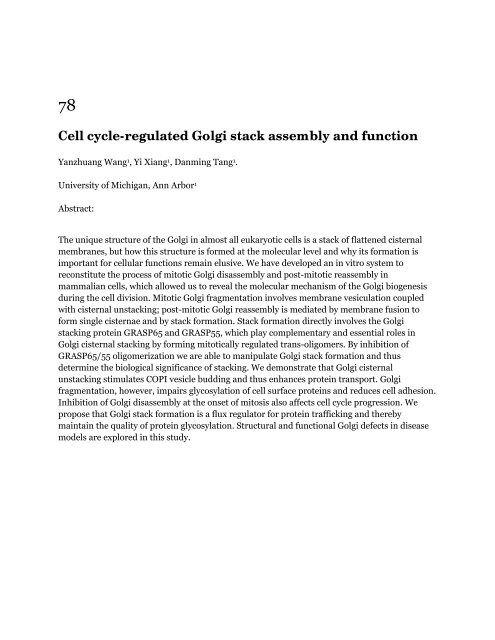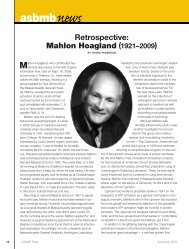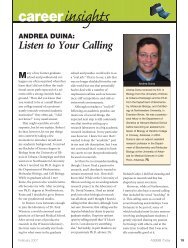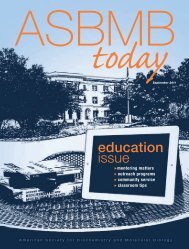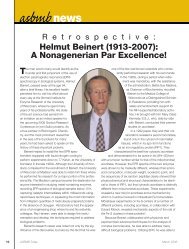View Program - asbmb
View Program - asbmb
View Program - asbmb
- TAGS
- program
- asbmb
- www.asbmb.org
Create successful ePaper yourself
Turn your PDF publications into a flip-book with our unique Google optimized e-Paper software.
78<br />
Cell cycle-regulated Golgi stack assembly and function<br />
Yanzhuang Wang 1 , Yi Xiang 1 , Danming Tang 1 .<br />
University of Michigan, Ann Arbor 1<br />
Abstract:<br />
The unique structure of the Golgi in almost all eukaryotic cells is a stack of flattened cisternal<br />
membranes, but how this structure is formed at the molecular level and why its formation is<br />
important for cellular functions remain elusive. We have developed an in vitro system to<br />
reconstitute the process of mitotic Golgi disassembly and post-mitotic reassembly in<br />
mammalian cells, which allowed us to reveal the molecular mechanism of the Golgi biogenesis<br />
during the cell division. Mitotic Golgi fragmentation involves membrane vesiculation coupled<br />
with cisternal unstacking; post-mitotic Golgi reassembly is mediated by membrane fusion to<br />
form single cisternae and by stack formation. Stack formation directly involves the Golgi<br />
stacking protein GRASP65 and GRASP55, which play complementary and essential roles in<br />
Golgi cisternal stacking by forming mitotically regulated trans-oligomers. By inhibition of<br />
GRASP65/55 oligomerization we are able to manipulate Golgi stack formation and thus<br />
determine the biological significance of stacking. We demonstrate that Golgi cisternal<br />
unstacking stimulates COPI vesicle budding and thus enhances protein transport. Golgi<br />
fragmentation, however, impairs glycosylation of cell surface proteins and reduces cell adhesion.<br />
Inhibition of Golgi disassembly at the onset of mitosis also affects cell cycle progression. We<br />
propose that Golgi stack formation is a flux regulator for protein trafficking and thereby<br />
maintain the quality of protein glycosylation. Structural and functional Golgi defects in disease<br />
models are explored in this study.


